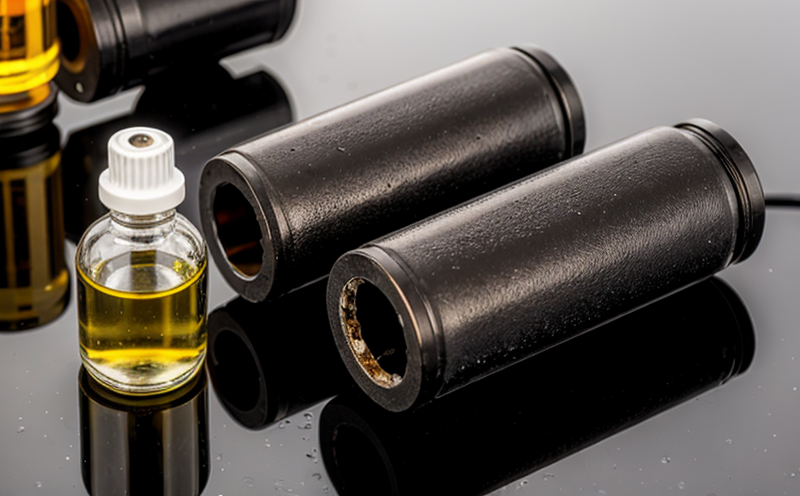EPA 8015B TPH Hydrocarbons Test in Water
The EPA Method 8015B is a standardized protocol designed to measure Total Petroleum Hydrocarbon (TPH) levels in water samples. This method provides precise and reliable results, ensuring accurate monitoring of hydrocarbon contamination in various waters including surface water, ground water, and wastewater.
Hydrocarbons are a significant concern for environmental health due to their potential to cause harm to aquatic ecosystems and human health through direct exposure or bioaccumulation. The EPA 8015B test is critical for compliance with environmental regulations and for understanding the impact of hydrocarbon contamination on water quality.
The test involves several key steps: sample preparation, extraction using dichloromethane, evaporation, and finally gravimetric analysis to determine the TPH concentration. The method's precision and accuracy make it a cornerstone in environmental monitoring programs. Compliance with EPA 8015B is essential for industries that discharge treated or untreated wastewater into water bodies.
The significance of this test extends beyond mere compliance; it plays a crucial role in safeguarding public health, protecting aquatic ecosystems, and ensuring sustainable use of natural resources. By regularly monitoring TPH levels, stakeholders can take proactive measures to mitigate the impact of hydrocarbon contamination, thereby supporting environmental sustainability efforts.
The EPA 8015B method is widely recognized for its robustness and reliability in quantifying total petroleum hydrocarbons. This makes it an indispensable tool for industries such as oil and gas, petrochemicals, and wastewater treatment facilities. Regular testing not only ensures regulatory compliance but also contributes to the overall health of aquatic environments.
Understanding the complexities involved in EPA 8015B testing requires a comprehensive approach that includes sample preparation, extraction methods, and gravimetric analysis techniques. Each step must be conducted with precision to ensure accurate results. The method's robustness is further enhanced by its ability to handle various water matrices, including those with high organic content.
Compliance with EPA 8015B standards is not just a regulatory requirement; it reflects a commitment to environmental stewardship and public health. By adhering to this method, stakeholders can contribute to the broader goal of sustainable development and environmental protection.
Why It Matters
The EPA 8015B TPH hydrocarbons test is pivotal in several ways:
- Environmental Protection: Ensures clean water and reduces the risk of harm to aquatic life.
- Regulatory Compliance: Helps industries meet stringent environmental regulations.
- Sustainable Development: Supports long-term ecological balance and resource sustainability.
- Health and Safety: Protects public health by monitoring potential contaminants in water sources.
The test's reliability is further emphasized by its ability to provide actionable data that can inform decision-making processes. By identifying hydrocarbon levels, stakeholders can implement targeted strategies to reduce contamination and improve overall water quality.
Moreover, the method plays a crucial role in supporting research and development efforts aimed at improving wastewater treatment technologies and enhancing environmental monitoring techniques. Its importance cannot be overstated, as it forms the backbone of many environmental protection initiatives.
Applied Standards
| Standard | Description |
|---|---|
| EPA Method 8015B | Total petroleum hydrocarbon analysis by extraction with dichloromethane and gravimetrically. |
| ISO 16005:2017 | Determination of total petroleum hydrocarbons in water by ultrasonic assisted extraction. |
| ASTM D4849-13 | Standard test method for determination of total petroleum hydrocarbon (TPH) in water and waste waters by infrared spectroscopy. |
Environmental and Sustainability Contributions
- Reduction of Contamination: By identifying hydrocarbon levels, stakeholders can take proactive measures to mitigate contamination.
- Enhanced Water Quality: Regular testing ensures that water quality remains at acceptable levels, supporting sustainable use.
- Eco-Friendly Practices: Compliance with EPA 8015B encourages the adoption of eco-friendly practices and technologies in wastewater treatment processes.
- Public Health Protection: Monitoring hydrocarbon contamination helps protect public health by ensuring clean water sources.
The method's role in environmental sustainability is evident through its contribution to reducing pollution, protecting ecosystems, and promoting the use of cleaner technologies. By adhering to EPA 8015B standards, stakeholders can contribute significantly to broader environmental goals.





